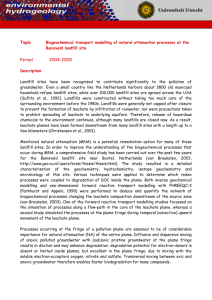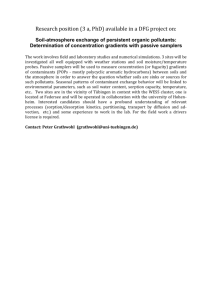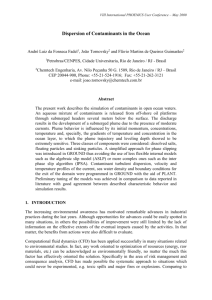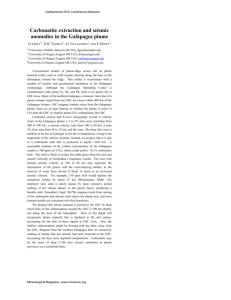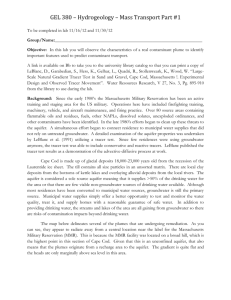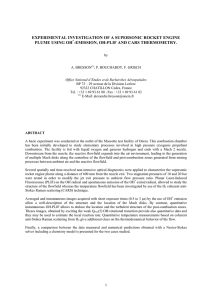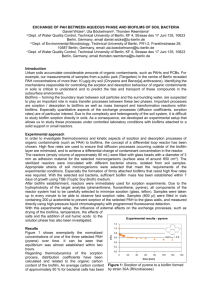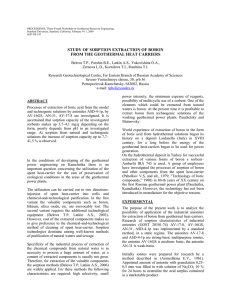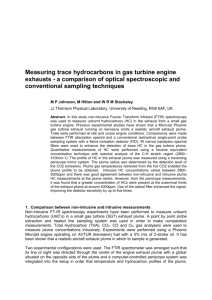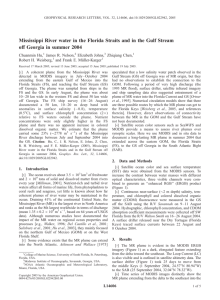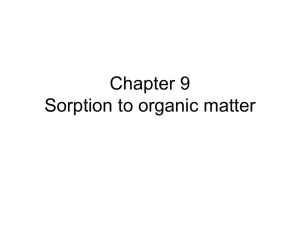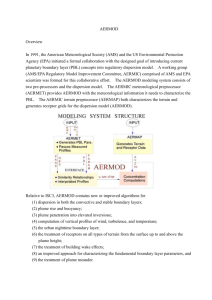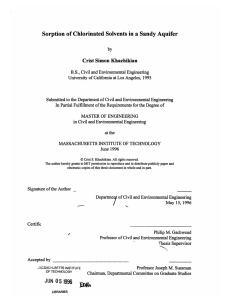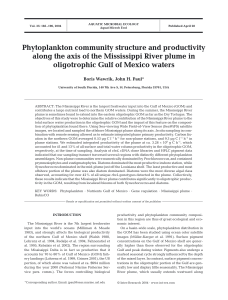Integrating geochemical, reactive transport, and facies
advertisement
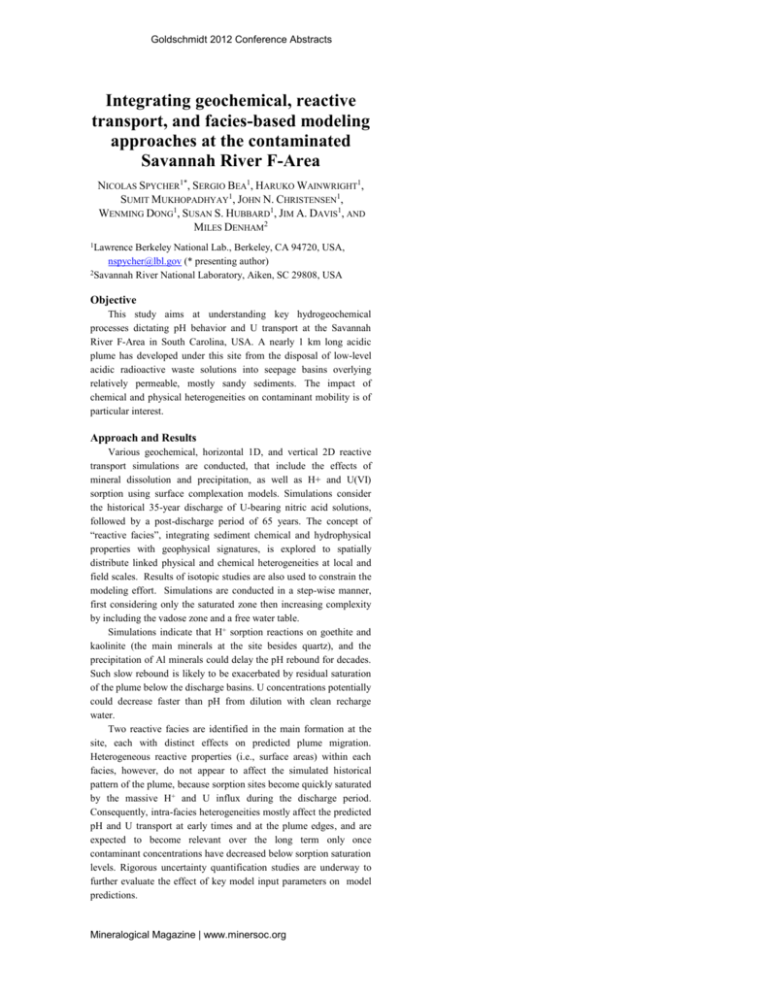
Goldschmidt 2012 Conference Abstracts Integrating geochemical, reactive transport, and facies-based modeling approaches at the contaminated Savannah River F-Area NICOLAS SPYCHER1*, SERGIO BEA1, HARUKO WAINWRIGHT1, SUMIT MUKHOPADHYAY1, JOHN N. CHRISTENSEN1, WENMING DONG1, SUSAN S. HUBBARD1, JIM A. DAVIS1, AND MILES DENHAM2 1Lawrence Berkeley National Lab., Berkeley, CA 94720, USA, nspycher@lbl.gov (* presenting author) 2Savannah River National Laboratory, Aiken, SC 29808, USA Objective This study aims at understanding key hydrogeochemical processes dictating pH behavior and U transport at the Savannah River F-Area in South Carolina, USA. A nearly 1 km long acidic plume has developed under this site from the disposal of low-level acidic radioactive waste solutions into seepage basins overlying relatively permeable, mostly sandy sediments. The impact of chemical and physical heterogeneities on contaminant mobility is of particular interest. Approach and Results Various geochemical, horizontal 1D, and vertical 2D reactive transport simulations are conducted, that include the effects of mineral dissolution and precipitation, as well as H+ and U(VI) sorption using surface complexation models. Simulations consider the historical 35-year discharge of U-bearing nitric acid solutions, followed by a post-discharge period of 65 years. The concept of “reactive facies”, integrating sediment chemical and hydrophysical properties with geophysical signatures, is explored to spatially distribute linked physical and chemical heterogeneities at local and field scales. Results of isotopic studies are also used to constrain the modeling effort. Simulations are conducted in a step-wise manner, first considering only the saturated zone then increasing complexity by including the vadose zone and a free water table. Simulations indicate that H+ sorption reactions on goethite and kaolinite (the main minerals at the site besides quartz), and the precipitation of Al minerals could delay the pH rebound for decades. Such slow rebound is likely to be exacerbated by residual saturation of the plume below the discharge basins. U concentrations potentially could decrease faster than pH from dilution with clean recharge water. Two reactive facies are identified in the main formation at the site, each with distinct effects on predicted plume migration. Heterogeneous reactive properties (i.e., surface areas) within each facies, however, do not appear to affect the simulated historical pattern of the plume, because sorption sites become quickly saturated by the massive H+ and U influx during the discharge period. Consequently, intra-facies heterogeneities mostly affect the predicted pH and U transport at early times and at the plume edges, and are expected to become relevant over the long term only once contaminant concentrations have decreased below sorption saturation levels. Rigorous uncertainty quantification studies are underway to further evaluate the effect of key model input parameters on model predictions. Mineralogical Magazine | www.minersoc.org




